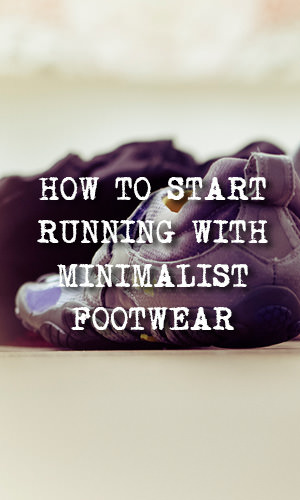
How To Start Running With Minimalist Footwear
Posted on 15 Sep, 2020
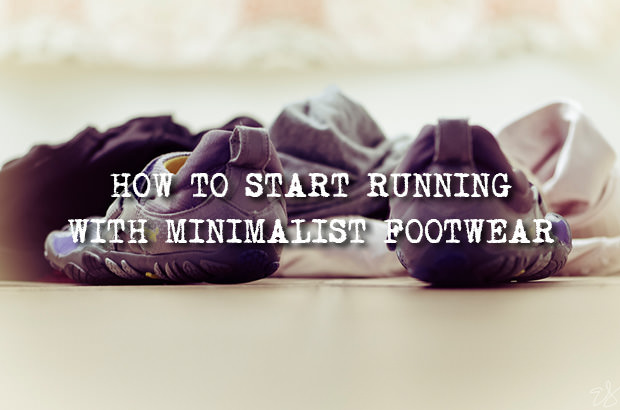
Minimalist running has become all the rage, as research continues to emerge about its potential benefits, and as runners become more vocal about their success stories.
So what exactly constitutes minimalist running? In short, it involves wearing a running shoe that doesn’t impede upon the body’s natural biomechanics.
The traditional running shoe has cushioning, elevated heels and extra weigh, factors that cause most runners to heel strike, impeding forward motion. Supportive running shoes also usually have a high heel to toe ratio — the heel is typically elevated 10-12 mm above the toe.
Unlike traditional running shoes, the soles on minimalist shoes are not stiff and will twist easily from the center to the midfoot. Minimalist shoes have between a 6mm to zero heel drop. All this allows natural movement in the arch.
The case for minimalist running is that it promotes the natural motion of the foot, and that over time, by exposing the foot to varying forces, it gets stronger and more resilient. Running with less of a shoe also encourages you to land midfoot, which lowers your impact with the ground and the chance of injury.
But it is not the goal of this article to persuade you one way or the other to try minimalist running, as it works well for some, and not for others. What we do know is that the biomechanics of running in a minimalist shoe is very different from when you run in a traditional shoe. And we’d like to share with you some tips on how best make this transition.
Consider A Progression Of Shoe Types

Some runners, when they finally decide to take the dive, end up acquiring the leanest shoe on the market. But it needn’t be that drastic.
There are plenty of transitional trainers on the market which will allow you to move progressively from a 12mm heel drop to an 8 and then a 4 and finally a zero. The progression from one extreme to the next would be as follows:
Motion-control Shoe -> Stability Shoe -> Neutral Shoe -> Minimalist Shoe -> Vibram FiveFingers -> Barefoot
Building Your Foundation

The first step in successfully transitioning to a minimalist running shoe is building a foundation of strength and balance in your feet, lower legs and hips. With minimalist footwear, there are no built-in support devices to support your ankles and foot arch, which means your foot, ankle and lower leg have to work harder to maintain and support your body in motion.
First go for flexibility, then strength. Start with basic calf stretches, knee pointers, single leg pointers, and toe pointers. Then move on to weight bearing exercises that target your lower leg, hip and core muscles.
Easing Into It

Many runners fall into the trap of going minimal and thinking they can continue with their training program where they left off.
It is vital that you respect the fact that your body needs time to adjust to a new style of running. Start slowly and build up gradually. This will give your body a chance to tell you how it feels about the change before you do any harm to yourself.
A nice, gentle way to acclimatize your feet to your new shoes is to wear it around for walking for a few days. Then take it for a short run. After that, increase your distance gradually using the 10% rule.
Run On Softer Terrain

If you’re going to hit the ground running, don’t do it on concrete or asphalt.
Because of the lean padding of minimalist shoes, it is advisable that you transition on a softer surface like grass or dirt. Injuries like metatarsal stress fractures and tendonitis are common among minimalist runners who have not developed enough foot strength. Training on a surface with more give allows your feet to safely get strong.
Alternate Between Traditional Trainers And Your New Footwear

The majority of running injuries are the result of repetitive strain. Because different shoe styles expose your feet to different forces, rotating your shoes makes great sense for injury prevention.
“Yea, but shoes cost a bomb?”
“Well, so do doctor’s visits.”
Altering Your Running Mechanics

Learning how to land properly helps develop your spring mechanism and will allow you to land softly with minimal impact with the ground.
The natural running motion usually comes automatically to runners who make the switch to minimalist footwear. But this doesn’t happen for everyone—from habit they will continue to run as they did with a supportive shoe.
The most common way to run with a minimalist shoe is to strike midfoot first, use short strides with a quick cadence, and spring off rather than push off from the ground. Two running styles have become very popular for minimalist running. Chi Running focuses on breathing, alignment, and using the flow of natural forces to your advantage. The Pose Method employs an optimum running stance which allows for the greatest possible use of gravity to your advantage. To learn more about these, check out these books.
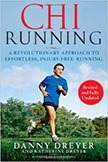 |
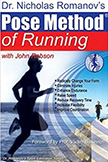 |
Socks, No Socks? And How About Orthotics?

Some of the benefits of wearing socks with minimal footwear is that they help to wick off sweat, reduces friction, and in the winter, provides warmth. For Vibram FiveFingers, you can go for socks with individual toe sleeves such as those from Injinji.
With minimalist running, the idea is to get as close to running barefoot as possible. So orthotics may defeat the whole purpose of minimalist shoes.
Final Word

Changing movement patterns takes time. Remain patient throughout the transition process and follow the recommended steps above. You’ll be running free before you know it.
Photo Credits
Great Books For Minimalist Runners


by Bill Katovsky

by Roy M. Wallack

by Michael Sandler

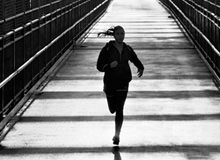 Proven Methods To Motivate You To Run
Proven Methods To Motivate You To Run Dog Accidentally Runs In Half Marathon And Finishes Seventh
Dog Accidentally Runs In Half Marathon And Finishes Seventh Best Foods For Running In Winter
Best Foods For Running In Winter Common Mistakes That Lead To Running Injuries
Common Mistakes That Lead To Running Injuries










